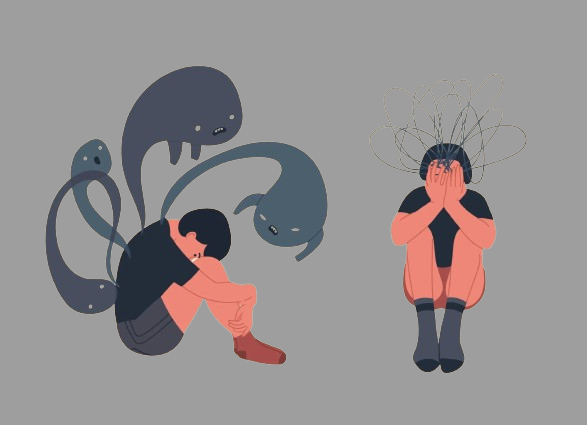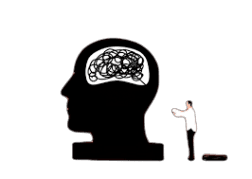Maladjustment is a term we might hear in conversations about mental health, school performance, or even workplace dynamics. But what does it really mean? In simple terms, maladjustment refers to the inability to adapt effectively to the demands of the environment, whether that environment is school, home, work, or social life. Everyone experiences stress or change at some point, but when a person consistently struggles to cope in a healthy way, it may be a sign of maladjustment.

Recognizing the symptoms of maladjustment is important because it can be the first step in getting someone the help they need. The earlier these signs are identified, the easier it is to provide support and prevent long-term negative effects on mental, emotional, and physical health. In this article, we will break down the symptoms of maladjustment into easy-to-understand categories and explore real-life examples to bring clarity to this complex issue.
Emotional Symptoms
Maladjustment often first shows up through changes in a person’s emotional state. Emotional symptoms can be difficult to detect at first because people often try to hide their feelings. However, some common emotional signs include:
- Persistent sadness or depression: A person may seem down most of the time, uninterested in things they used to enjoy.
- Anxiety or constant worry: Feeling on edge, nervous, or overly concerned about things that didn’t bother them before.
- Mood swings: Rapid changes in mood that seem out of proportion to the situation.
- Low self-esteem: Frequent self-criticism, feelings of worthlessness, or hopelessness.
For example, a high school student who used to be cheerful and confident might become withdrawn, complain of feeling overwhelmed, and constantly worry about failing, even when their grades are good. This shift in emotional state could be a sign of emotional maladjustment.
Behavioral Symptoms
Behavioral symptoms are usually easier to spot because they involve noticeable actions. These symptoms often indicate that a person is struggling to manage their feelings or cope with stress. Common behavioral signs include:
- Aggression or irritability: Lashing out at others, frequent arguments, or violent behavior.
- Avoidance or withdrawal: Skipping school or work, avoiding social situations, or staying isolated.
- Substance abuse: Using drugs or alcohol to cope with emotional distress.
- Defiance or rule-breaking: Especially in children and adolescents, acting out, breaking rules, or refusing to follow instructions.

Take the case of a young adult who begins missing work frequently and starts drinking heavily on weekends to “take the edge off.” They may become argumentative with family members and stop participating in activities they once loved. These behaviors can signal that they are not coping well with life’s pressures.
Social Symptoms
Humans are social creatures, so our ability to interact with others is a key indicator of mental health. When someone is maladjusted, their social behavior often changes. Watch for signs such as:
- Difficulty forming or maintaining relationships: Trouble making friends, frequent conflicts, or social anxiety.
- Feeling disconnected or isolated: Even when surrounded by others, they may feel alone or misunderstood.
- Lack of empathy or understanding: Struggling to see things from another person’s perspective, leading to miscommunication.
Imagine a teenager who suddenly stops hanging out with their friends and starts spending most of their time alone. They might feel like no one understands them or that they don’t fit in. This could be a symptom of social maladjustment.
Physical Symptoms
Maladjustment doesn’t just affect the mind—it can also take a toll on the body. Stress and emotional struggles can manifest in physical ways, including:
- Sleep disturbances: Trouble falling asleep, staying asleep, or sleeping too much.
- Changes in appetite: Eating much more or much less than usual.
- Fatigue: Constant tiredness, even after getting rest.
- Frequent headaches or stomachaches: Especially in children, physical complaints can be a way of expressing emotional pain.
Consider an office worker who starts having trouble sleeping and wakes up exhausted, even after eight hours in bed. They complain of headaches, have no appetite, and feel drained all the time. These could be physical signs of maladjustment related to stress or burnout.
Case Scenarios for Better Understanding
- Child at School: An 8-year-old boy used to love school but has started throwing tantrums every morning and refusing to go. He complains of stomachaches that doctors can’t explain. At school, he struggles to concentrate and often lashes out at classmates. This combination of emotional, behavioral, and physical symptoms suggests maladjustment.
- College Student: A freshman in college finds it hard to make new friends. She begins skipping classes, sleeps excessively, and feels anxious all the time. She often cries alone in her dorm room and thinks she’s not good enough. These are emotional and social symptoms pointing to difficulty adjusting to a new environment.
- Working Adult: A middle-aged man experiences high pressure at work. He becomes short-tempered with his family, starts drinking every evening, and complains of back pain. His relationships suffer, and he feels constantly tired and overwhelmed. These symptoms suggest maladjustment due to work-related stress.
Potential Causes of Maladjustment
Understanding what causes maladjustment can help in addressing it effectively. Some common causes include:
- Chronic stress: Ongoing stress from school, work, or relationships can wear a person down.
- Trauma or abuse: Past experiences of emotional, physical, or sexual abuse can lead to long-term difficulties in adjustment.
- Family problems: Divorce, financial issues, or lack of support at home.
- Major life changes: Moving to a new place, starting a new school or job, or losing a loved one.
- Mental health disorders: Conditions like depression, anxiety, or ADHD can contribute to maladjustment if left untreated.
The Importance of Early Recognition and Seeking Help
The sooner maladjustment is identified, the better the chances of overcoming it. Ignoring the symptoms can lead to more serious mental health issues, academic failure, strained relationships, or even self-harm.
If you or someone you know shows signs of maladjustment, consider the following steps:
- Talk to someone: Sharing feelings with a trusted friend, family member, or counselor can provide relief.
- Seek professional help: Therapists, psychologists, and school counselors are trained to help individuals adjust and cope.
- Build a support system: Surround yourself with people who are understanding and supportive.
- Practice self-care: Healthy eating, regular exercise, and good sleep hygiene can make a big difference.
Conclusion
Maladjustment is more common than we might think, and its symptoms can show up in emotional, behavioral, social, and physical ways. Recognizing these signs early is key to helping someone get the support they need. With understanding, compassion, and proper intervention, anyone struggling to adjust can find their way to a healthier, more balanced life.
By spreading awareness and offering empathy, we can create environments—at school, work, and home—where people feel safe to speak up and seek help. Remember, maladjustment is not a failure; it’s a sign that someone needs support. And with the right care, things can and do get better.



